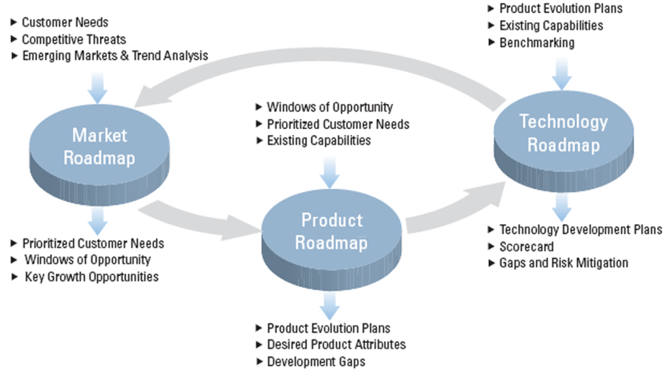 As mentioned above, Corning, a leading diversified technology company, uses roadmaps. In particular, Corning was able to bring products to market faster by using the roadmapping process. Prior to using roadmapping, Corning focused on entering new markets, but strategic planning across the organization was not aligned with portfolio planning, R&D efforts or market trends. The company used roadmapping across three divisions to align corporate strategy, R&D and portfolio planning. This helped them identify and select new market opportunities, enter markets early, and earn positive returns for the company within 24 months. The company also saw a decrease in development costs due to fewer last-minute changes that were difficult to integrate further down the development chain. In summary, roadmaps clarify thinking among stakeholders and enable the rapid communication and sharing of ideas. They also reveal valuable linkages among functional areas of a business that are often disconnected from each other, much like the roads that link and connect across a map.
Source: Introduction to Strategic Roadmapping, Sopheon White Paper
As mentioned above, Corning, a leading diversified technology company, uses roadmaps. In particular, Corning was able to bring products to market faster by using the roadmapping process. Prior to using roadmapping, Corning focused on entering new markets, but strategic planning across the organization was not aligned with portfolio planning, R&D efforts or market trends. The company used roadmapping across three divisions to align corporate strategy, R&D and portfolio planning. This helped them identify and select new market opportunities, enter markets early, and earn positive returns for the company within 24 months. The company also saw a decrease in development costs due to fewer last-minute changes that were difficult to integrate further down the development chain. In summary, roadmaps clarify thinking among stakeholders and enable the rapid communication and sharing of ideas. They also reveal valuable linkages among functional areas of a business that are often disconnected from each other, much like the roads that link and connect across a map.
Source: Introduction to Strategic Roadmapping, Sopheon White Paper
sopheonblog
Recent posts





